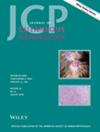Histopathologic Features in Vancomycin-Associated Drug-Induced Hypersensitivity Syndrome
Abstract
Background
Drug-induced hypersensitivity syndrome (DiHS), or drug reaction with eosinophilia and systemic symptoms (DRESS), is a delayed and severe immune response to certain medications. We investigated vancomycin-induced DiHS/DRESS, notable for frequent and severe organ involvement, to describe its specific histopathology and the correlations between histopathologic and clinical findings.
Methods
A retrospective review was conducted to identify patients between 2006 and 2022 who received vancomycin, had archived skin biopsy specimens, and were scored as having probable or definite DiHS/DRESS. Clinical features were retrospectively collected, and biopsy specimens were reviewed by a board-certified dermatopathologist. A subset of histopathologic and clinical features was analyzed for statistical correlation.
Results
Twenty-three patients met the inclusion criteria. Most biopsy specimens (87%) showed an eczematous reaction pattern; 17 (74%) showed a secondary reaction pattern. Spongiosis (87%) and neutrophilic infiltration (91%) were common epidermal characteristics. The dermal inflammatory infiltrate was frequently superficial (87%) and consistently included plasma cells (96%). Eosinophils were present in the dermis in 70% of cases. Parakeratosis negatively correlated with liver involvement and positively correlated with desquamative rash. Epidermal lymphocytes were negatively correlated with the RegiSCAR score.
Conclusions
Vancomycin-associated DiHS/DRESS histopathology was characterized by a frequent eczematous reaction pattern, multiple coexisting reaction patterns, and epidermal neutrophilic infiltration.

 求助内容:
求助内容: 应助结果提醒方式:
应助结果提醒方式:


